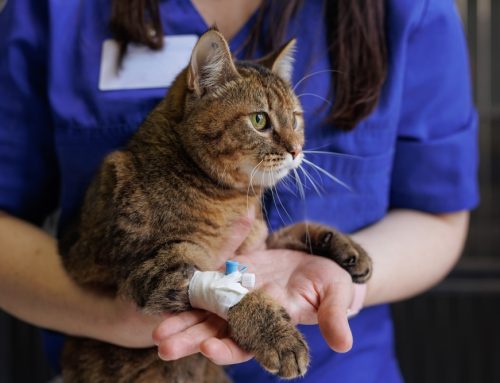We’ve all been there – waking up in the middle of the night to the sound of our cat hacking and retching up a hairball. Or better yet, not waking up and getting the squishy surprise of stepping in it the next morning. Ick. But why do cats get hairballs? When should you worry?
What is a hairball?
Cats are self-grooming creatures, so they ingest hair on a daily basis as part of their normal routine. They may also groom their friends and ingest hair from housemates. Have you ever noticed how rough your cat’s tongue is? Those tiny papillae point backwards and help the cat catch loose hair and untangle knots. They also prevent the cat from spitting out most of this hair, so instead they move hair towards the back of the mouth to be swallowed. Most of this hair will pass through the GI tract uneventfully and be passed in the stool. Sometimes the hair accumulates in the stomach or esophagus, leading to a hairball. When enough hair is trapped in the stomach it will often trigger the urge to vomit. Bringing up a hairball is usually an active process for most cats. They may make noise, hack, retch, or cough before bringing up the hair. A healthy hairball can be anywhere from 1-5 inches long, and is usually tube shaped from coming up the esophagus. The fluid around the hairball can range from clear to yellow to green to brown and still be normal. It will depend on how recently your cat ate and drank.
How many hairballs are normal?
Healthy cats can bring up a hairball on a weekly basis. Some will do so much less frequently (or never), and some cats will increase their hairballs during their twice yearly major shedding cycles. Cats who are distressed by their hairballs, vomit repeatedly, or bring up hairballs more than once a week should see the veterinarian.
How to treat hairballs:
Thankfully, there are several things you can do to make your cat’s hairballs less frequent.
- Brush your cat. Less loose hair = less hair ingested = less hair to vomit up. Long-haired cats afflicted by hairballs will benefit from being shaved
- Feed a hairball-specific diet. Science Diet Hairball Control, Purina Proplan Hairball Management, and Royal Canin Hairball Care cat foods all use proprietary fiber blends to catch the hair and pull it through the GI tract so it can be passed in the stool rather than vomited back up.
- Use a hairball remedy. Laxatone by Vetroquinol is a tasty gel that comes in tuna and maple flavors. It acts as a lubricant that coats the hair and allows it to pass through the GI tract








Leave A Comment